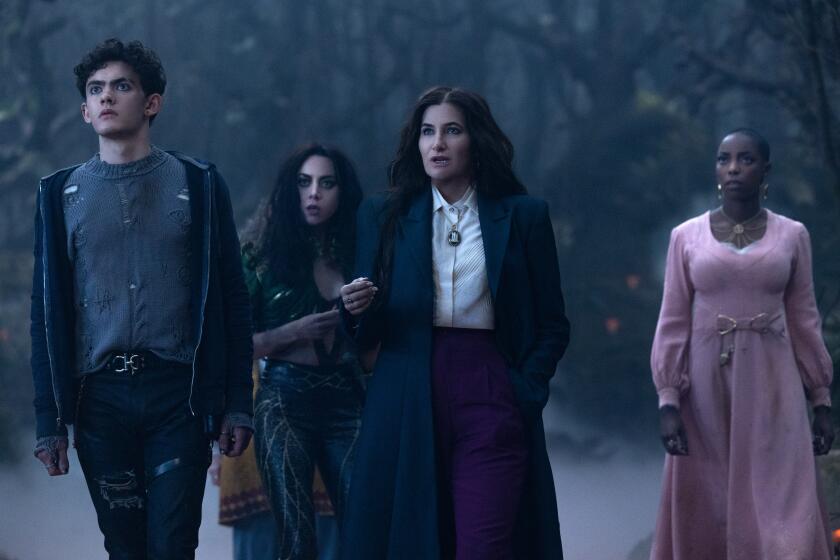In Sunday books: There’s big trouble down on the bayou in James Lee Burke’s “The Glass Rainbow”

The Glass Rainbow
A Novel
James Lee Burke
Simon & Schuster: 434 pp., $25.99
In crafting his novels, James Lee Burke has been nothing if not consistent when it comes to quality. Or to characters and plot. His repeated battles of good versus evil in the humid crucible of southern Louisiana are expertly and stylishly rendered, but they’ve also become undeniably formulaic. Trying to shake things up with the last entry, “Swan Peak,” the author sent his hero Dave Robicheaux to the mountains of Montana. But there the homicide detective encountered the same kind of obscenely wealthy and powerful monsters, innocent and guilty bystanders and good-hearted losers he’d left on the bayou. So it would not be a surprise for readers of one or more of the previous 17 Robicheaux chronicles to assume they know what to expect from Number 18, “The Glass Rainbow.”
That’s partly true. “The Glass Rainbow” offers much that is familiar, from the brilliant lyrical wordscapes that capture bayou locations to the incomparably ruthless men and women of low or no conscience who wield power over others and threaten the way of life in Robicheaux’s small corner of the world. The detective and his cohort Clete Purcell are as heroic, honorable and flawed as always.
But for all that is familiar here, there are two unexpected plot elements, one of which has the potential for changing everything.
The lesser of the two involves Dave’s beloved adopted daughter, Alafair, who is taking a semester off from Stanford Law School to finish a novel. She has begun a serious first romance with a local named Kermit Abelard, a novelist and activist who seems to be ideal son-in-law material. Naturally, Dave doesn’t like him, mainly because the Abelard family, which “at one time owned almost half of St. Mary Parish,” is presided over by the young man’s grandfather, a wealthy degenerate with at least a peripheral connection to seven women murdered in a nearby parish. If that weren’t enough, Kermit has successfully arranged for the parole of celebrity convict author Robert Weingart, in Dave’s words, “a sociopath and narcissist and manipulator … who had been in and out of reformatories and jails since he was sixteen.”
Though Kermit seems to genuinely care for Alafair, Robicheaux is convinced he’s harboring some secret, sinister motive. Not one to hide his feelings, he presses his daughter to end the relationship, effectively alienating her and sending her to stay in the potentially dangerous Abelard estate.
Not that Alafair is a stranger to parlous situations. She’s been in peril from her first appearance as a tiny Salvadoran tot in “Heaven’s Prisoners” (1988), when Robicheaux rescued her from a private plane that crashed into the Gulf of Mexico. Since then, she’s been stalked, threatened and intimidated by a lineup of creepy characters, the newest of which is an ex-con named Vidor Perkins. Possibly an associate of Weingart’s, possibly serving his own agenda, the insinuating, anger-baiting Perkins is a Burke specialty, an enigmatic stranger as fascinating as he is loathsome, whose potential threat and, in fact, whose importance to the plot remain ambiguous.
One would think that investigating multiple murders, attempting to mend the rift between his daughter and himself, dealing with the presence of ex-cons Perkins and Weingart and trying to extricate Purcell from an air-tight murder frame would be more than enough for Robicheaux to handle. But Burke adds an extra burden of woe. The normally depressed detective is not merely feeling a sense of his own imminent mortality, but he’s also given an irrefutable sign that the end is near — a mystic vision of a 19th-century paddle-wheeler floating down Bayou Teche, its ancient crew and passengers beckoning him aboard.
There’s nothing like a harbinger of death to unsettle a lawman. That goes double for the reader, prompting a frisson of uneasiness at its first mention that increases with each sighting. By the time the novel arrives at Robicheaux’s and Purcell’s inevitable, inevitably violent final confrontation with evil, that otherworldly paddle-wheeler is lowering its gangway in anticipation, and the suspense level is about as high as it gets in popular fiction.
Does Robicheaux hop aboard for a sail down the River Styx? Burke couldn’t have picked a better last stand for his hero. Still, one hopes that Purcell isn’t being overly optimistic with his claim that “The Bobbsey Twins from Homicide are forever.” After Dave’s and his creator’s eloquent, heart-rending take on post-Katrina New Orleans in the novel “The Tin Roof Blowdown,” one wonders what they might have to say about BP’s devastating lube job on Louisiana’s wetlands.
Lochte is the co-author, with Al Roker, of “The Morning Show Murders” and the forthcoming “The Midnight Show Murders.”
More to Read
The biggest entertainment stories
Get our big stories about Hollywood, film, television, music, arts, culture and more right in your inbox as soon as they publish.
You may occasionally receive promotional content from the Los Angeles Times.










